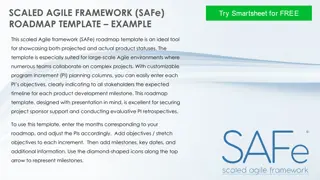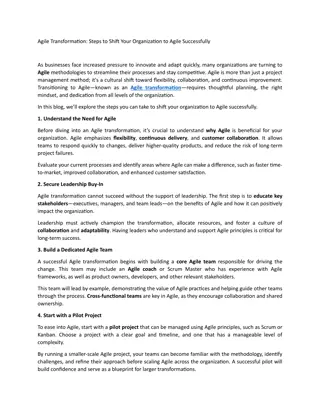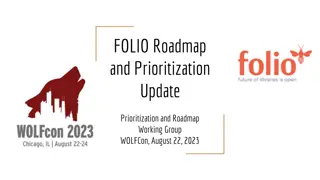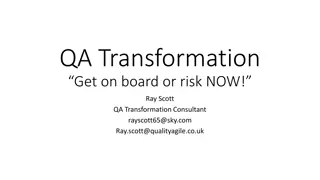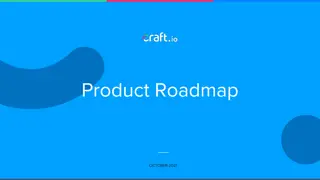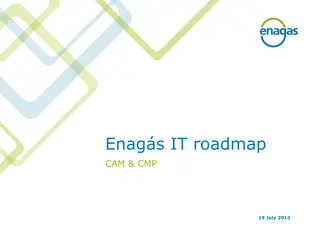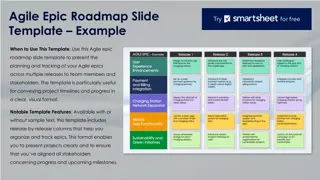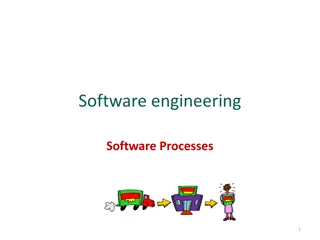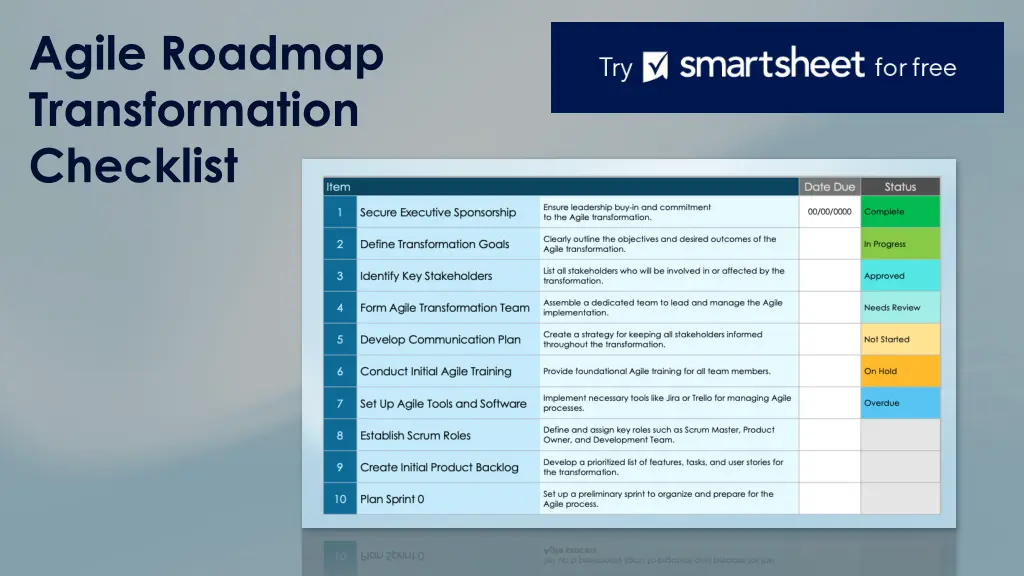
Agile Roadmap Transformation Checklist for Successful Agile Implementation
Learn how to successfully transform your organization with agile methodologies. This comprehensive checklist guides you through key steps, from securing executive sponsorship to scaling agile practices. Drive continuous improvement and celebrate success with this structured approach.
Download Presentation

Please find below an Image/Link to download the presentation.
The content on the website is provided AS IS for your information and personal use only. It may not be sold, licensed, or shared on other websites without obtaining consent from the author. If you encounter any issues during the download, it is possible that the publisher has removed the file from their server.
You are allowed to download the files provided on this website for personal or commercial use, subject to the condition that they are used lawfully. All files are the property of their respective owners.
The content on the website is provided AS IS for your information and personal use only. It may not be sold, licensed, or shared on other websites without obtaining consent from the author.
E N D
Presentation Transcript
Agile Roadmap Transformation Checklist
Item Date Due Status Ensure leadership buy-in and commitment to the Agile transformation. 1 Secure Executive Sponsorship 00/00/0000 Complete Clearly outline the objectives and desired outcomes of the Agile transformation. 2 Define Transformation Goals In Progress List all stakeholders who will be involved in or affected by the transformation. 3 Identify Key Stakeholders Approved Assemble a dedicated team to lead and manage the Agile implementation. 4 Form Agile Transformation Team Needs Review Create a strategy for keeping all stakeholders informed throughout the transformation. 5 Develop Communication Plan Not Started 6 Conduct Initial Agile Training Provide foundational Agile training for all team members. On Hold Implement necessary tools like Jira or Trello for managing Agile processes. 7 Set Up Agile Tools and Software Overdue Define and assign key roles such as Scrum Master, Product Owner, and Development Team. 8 Establish Scrum Roles Develop a prioritized list of features, tasks, and user stories for the transformation. 9 Create Initial Product Backlog Set up a preliminary sprint to organize and prepare for the Agile process. 10 Plan Sprint 0
Item Date Due Status 11 Launch Pilot Agile Teams Identify select Agile teams to test and refine practices. Organize sessions to plan the work for each sprint within the pilot teams. 12 Conduct Sprint Planning Sessions Begin daily Scrum meetings to review progress and address issues. 13 Implement Daily Standups 14 Run Retrospectives Review the process after each sprint and make improvements. 15 Measure Initial Success Track progress and measure outcomes against the initial goals. Make necessary adjustments based on feedback from the pilot teams. 16 Adjust Agile Processes Expand Agile to additional teams and departments based on pilot results. 17 Scale Agile Practices Provide ongoing, advanced training and support as Agile scales. 18 Continue Agile Training Integrate Agile with Existing Processes Align Agile with other methodologies or practices in the organization. 19 Track the pace of work completed during sprints to measure productivity. 20 Monitor Team Velocity
Item Date Due Status Foster Culture of Continuous Improvement Encourage regular feedback and iterative improvements within teams. 21 Keep stakeholders informed of progress, including challenges and successes. 22 Update Stakeholders Regularly Ensure Compliance and Governance Align Agile practices with organizational policies and governance standards. 23 Create forums or groups for sharing Agile knowledge and experiences within the organization. 24 Establish Community Review and Update Product Backlog Implement Cross-Functional Collaboration Monitor and Adjust Success Metrics Plan for Long-Term Agile Sustainability Conduct Final Review of Transformation Regularly refine and reprioritize the backlog as the transformation progresses. 25 Encourage collaboration across different teams and departments. 26 Continually review and adapt the metrics used to measure success. 27 Develop strategies for maintaining Agile practices over time. 28 Assess the overall success of the transformation and identify areas for future improvement. 29 Acknowledge the efforts and successes of the teams involved in the Agile transformation. 30 Celebrate Success
Notes Text
DISCLAIMER Any articles, templates, or information provided by Smartsheet on the website are for reference only. While we strive to keep the information up to date and correct, we make no representations or warranties of any kind, express or implied, about the completeness, accuracy, reliability, suitability, or availability with respect to the website or the information, articles, templates, or related graphics contained on the website. Any reliance you place on such information is therefore strictly at your own risk.

